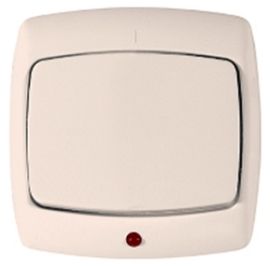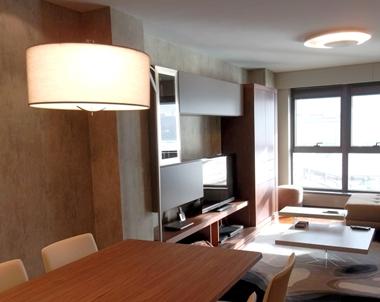Categories: Featured Articles » Sources of light
Number of views: 17633
Comments on the article: 3
The reasons for the flashing of a compact fluorescent lamp (housekeeper) and methods for solving this problem
 A compact fluorescent lamp (housekeeper) is popular due to the significantly lower power consumption compared to traditional incandescent lamps. But, often there is such an unpleasant situation as the flashing of housekeepers, which occurs when the switch of a given lamp is turned off. That is, the fluorescent lamp operates in normal mode, but continues to flash when turned off, which, firstly, causes inconvenience, and secondly, it causes concern regarding the safety of the lamp in this mode.
A compact fluorescent lamp (housekeeper) is popular due to the significantly lower power consumption compared to traditional incandescent lamps. But, often there is such an unpleasant situation as the flashing of housekeepers, which occurs when the switch of a given lamp is turned off. That is, the fluorescent lamp operates in normal mode, but continues to flash when turned off, which, firstly, causes inconvenience, and secondly, it causes concern regarding the safety of the lamp in this mode.
Below we consider the main causes of blinking compact fluorescent tubes and appropriate solutions to this problem.
One of the most common problems of flickering housekeepers is the presence of this backlight in the light switch. Blinking in this case occurs because the circuit, power LED (or neon light) backlight when the light switch is off, passes through the electronic ballast of a fluorescent lamp.
Switch backlight LED It has a lot of resistance, so the housekeeper does not light up, but only makes unsuccessful launch attempts: the capacitor of the electronic ballast of the fluorescent lamp is charged / discharged.
How in this case to solve the problem of flashing lamps? One of the solutions to this problem is to turn off the backlight in the switch.

The next option allows you to leave the backlight in the switch, but it is relevant for fixtures with several energy-saving lamps. In this case, to eliminate the flickering of the housekeepers, it is enough to replace one of the lamps in the lamp, powered by one switch, with a conventional incandescent lamp.
Also, if there is a desire to leave the backlight in the switch, a solution to the problem may be to choose a different type of lamp that will not blink due to the presence of backlight in the switch - this is an incandescent lamp halogen lamp, calculated on food directly from a household network 220 V.
Also, the cause of the housekeeper blinking when the switch is off can be a faulty switch. Perhaps, after the circuit breaker is turned off, its contacts are not fully opened and there is little resistance between them. In this case, the contact is not enough for the lamp to work properly, current leakage causes the lamp to flicker.
In order to make sure that the faulty switch is the cause of the lamp blinking, it is necessary to remove the cover of its housing and examine the operation of its contacts when the switch is on / off.
If a malfunction is detected, the circuit breaker should be replaced or, if possible and with appropriate skills, repaired, having achieved complete opening of the circuit breaker contacts when its position is turned off.

Often this situation arises: some housekeepers do not blink when off, while others blink. At the same time, there is no backlight in the switches, and the switches themselves are in good condition.
The reason for this phenomenon may be an error in the wiring installation, consisting in the fact that a break in the circuit breaker neutral conductor, and phase approaches directly to the lamp.
The flashing of the lamp in this case occurs due to the occurrence of a potential between the phase conductor, which is connected to the lamp and zero, which in this case is a capacity relative to the building structures in which the wiring is laid.
Read also:Extend the life of a compact fluorescent lamp (housekeeper)
See also at bgv.electricianexp.com
:
